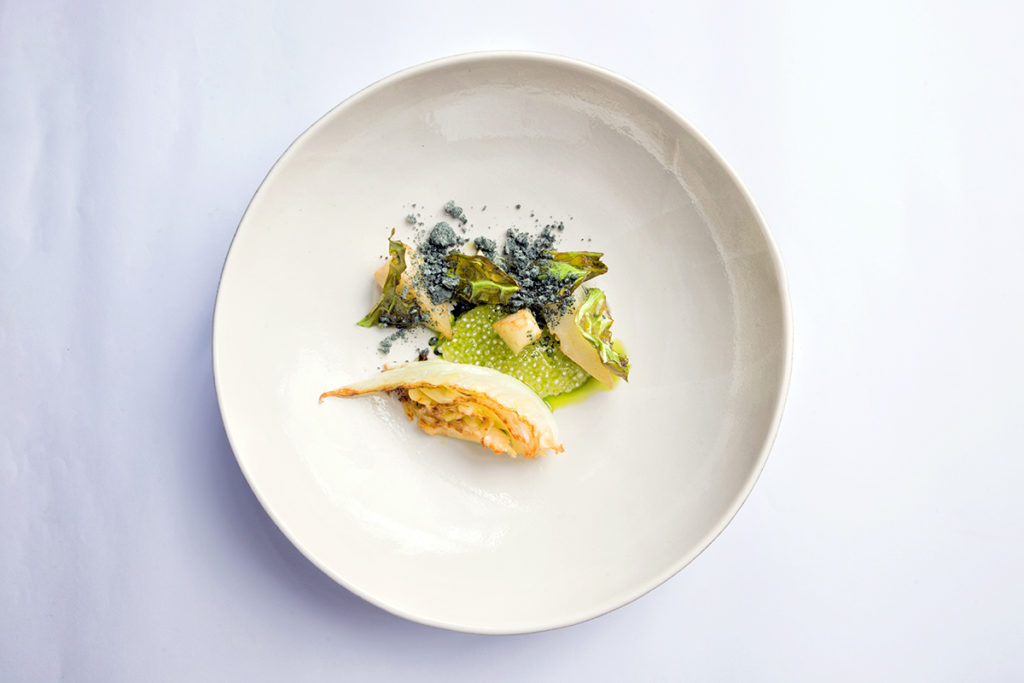Running a restaurant is no easy task. Having to focus on aspects that don’t usually coincide with food is the norm. Keeping track of labor costs consumes an hour already. Monitoring inventory? There goes another hour. However, ensuring our waste is kept to a minimum and our yields are high is constantly on our minds. This takes up perhaps the vast majority of our time in a day.
Every year, restaurants lose hundreds of thousands of pesos on wastage and inadequate yielding. With this in mind, many chefs, myself included, pursue a direction towards creating a zero-waste menu.
Most produce is 100 percent edible, from the root to the flower, yet due to our current “ease of living,” we tend to purchase and use the prime parts of the crop without bothering to know how the other 30 to 50 percent of the produce tastes. With a little experimentation and creativity, you can turn what is seen as scraps into delicious meals at a fraction of the cost.
Root-to-stem cooking is meant to reduce food waste but it also drives chefs to be creative with their dishes
Take lettuce, for example. Usually, we only use the crisp leaves from the center of the head and easily dispose of the root. That has become routine, and it’s unfortunate because using the root may provide another dish. A romaine lettuce root is substantially bitter when eaten raw, but tossing it in boiling water and salted butter gives it a nutty flavor with an amazing crunch. Likewise, vegetable off-cuts like carrot peel and onion skin can be thrown into a saucepot to create a flavorsome broth.
At times, the stuff you discard contains more nutrition than the part you actually consume. And so, give scraps a chance, and use produce in its entirety. Hopefully, this practical act stirs us into a more sustainable direction.
Cabbage cabbage cabbage
Serves 4
Prep time 20 minutes
Ingredients
1 head cabbage
½ cup butter
3 cups chicken stock, divided
kosher salt, as needed
black pepper, as needed
3 tbsp tapioca pearls
butter, as needed
3 tbsp water
To start, prepare the cabbage head. Gently cut around the root at a 45-degree angle and extract the root. Crush the leaves slightly by using a clean towel. This will aid in removing individual leaves.
Braised cabbage
In a sauté pan, place butter and season well. Divide the cabbage core into four wedges. Place them flat on the pan and cook on medium-high heat. Once golden on one side, add a cup of chicken stock and cover with parchment paper. Place heat on low and cook for 30 minutes. After 30 minutes, the cores will be very delicate. Remove gently to prevent the leaves from separating. Set aside.
Sauce
Place the remaining leaves and scraps in a saucepan with two cups of chicken stock. Bring this to a boil to allow the cabbage flavor to seep into the stock. Cook for 10 minutes and strain into a clean saucepot. Slowly add the tapioca pearls and cook on medium high until translucent. Season with salt and pepper and reserve for plating.
The root
Divide root into eight chunks. Place a sauté pan on medium heat and add butter. Season the pan with salt and add the roots. Cook until light golden on the outside. Once golden, add three tablespoons of water, remove from the heat and cover with aluminum foil. This will allow the roots to maintain their crunch but allow the full flavor to come out.
The leaves
Take eight outer leaves and season with salt. Put the leaves in a dehydrator set at 60 degrees Celsius for two hours or until they are completely dry. Once dry, blend in a mixer to form a fine powder. Set aside. Meanwhile, take eight inner leaves and season with salt. Set aside for 10 minutes to allow some of the moisture to be extracted. Pat dry with clean paper towels and deep fry until light brown. Place on a bed of clean paper towels to drain excess oil.
Originally published in F&B Report Vol. 14 No. 2


